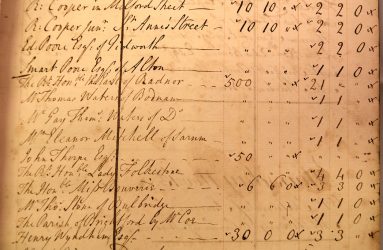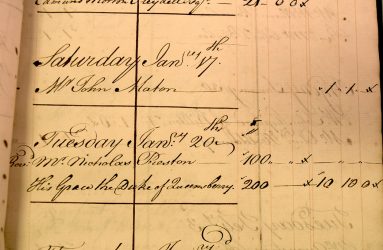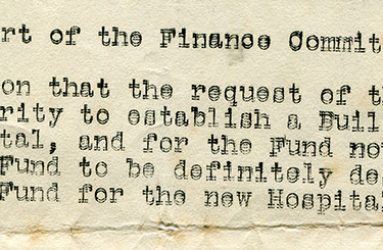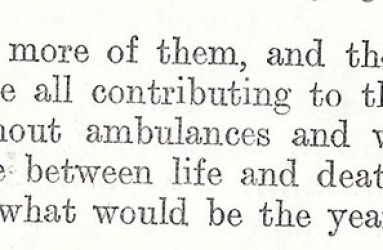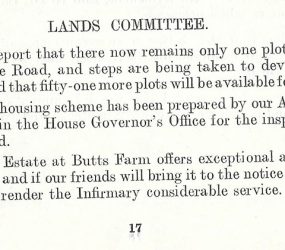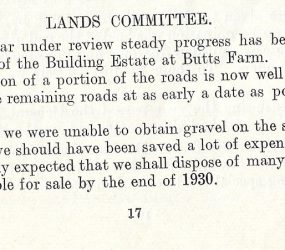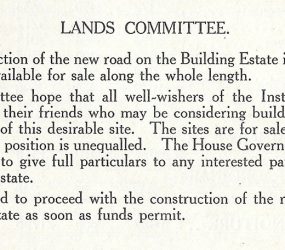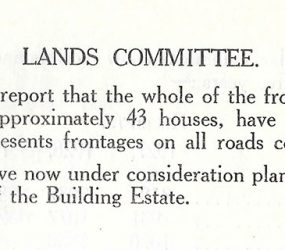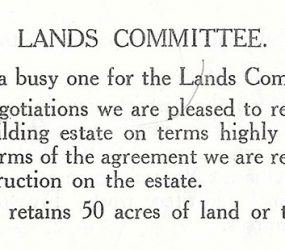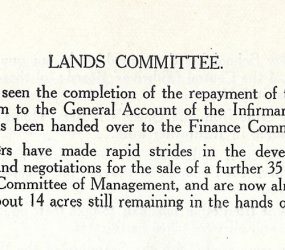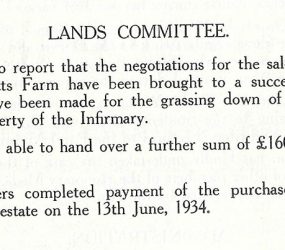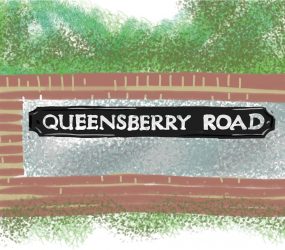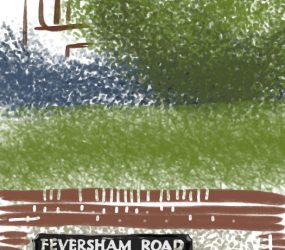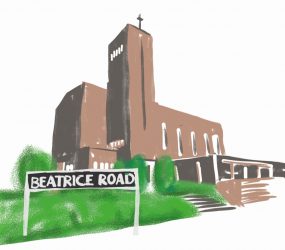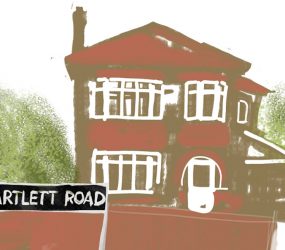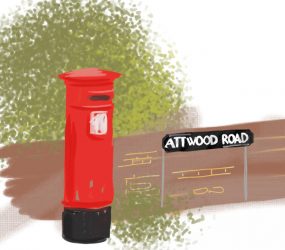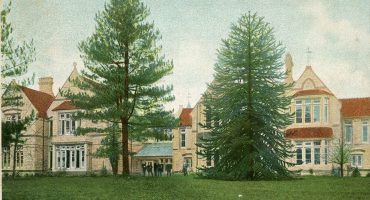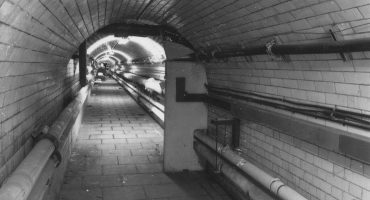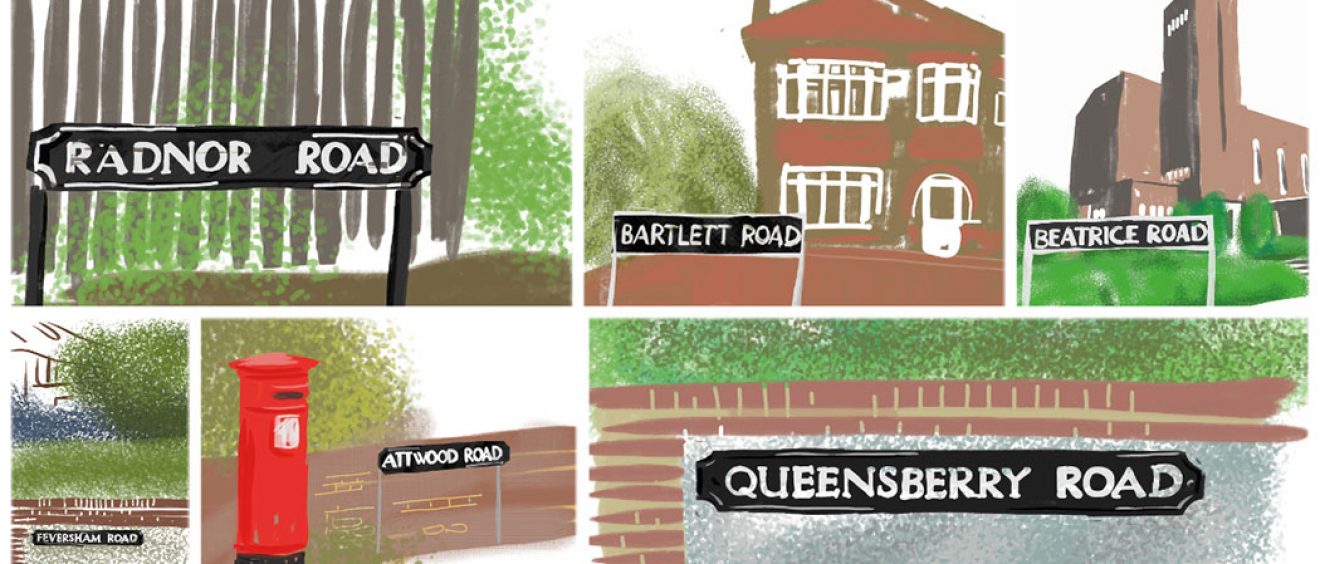
The hospital that never was
If you travel up Castle Road in Salisbury and turn off to the right you’ll find many roads with familiar and local family names: Attwood, Beatrice, Bartlett, Feversham, Queensberry and Radnor. Each of these were taken from ward names of Salisbury General Infirmary. Apart from Beatrice maternity ward (perhaps from the favourite youngest daughter Beatrice of Queen Victoria who she’d nicknamed ‘Baby’), the hospital ward names all come from patrons who gave significant financial donations that helped build and develop the hospital.
- Lord Antony Feversham left £500 on his death in 1763 which started the Infirmary building project
- In 1767 Earl of Radnor gave £500 and The Duke of Queensberry gave £200 towards the original appeal, which you can see in the ledgers kept to record each donation received
- John Bartlett donated £9579 in 1819
- Richard Attwood donated £2100 in 1849/1850
So why does a housing estate have hospital ward names?
What we can find in our archives records that the hospital owned the land in the 1920s, what came next on the timeline isn’t so clear, but on 28th February 1926 an agenda item for the management committee at Salisbury General Infirmary looked to establish a building fund for a new hospital known as at Butts Farm. Butts Farm was located back of modern day Radnor Road on the opposite side of Castle Road to Victoria Park.
At this time plans were also drawn up and can be seen in Wiltshire & Swindon Archives at Chippenham. The impressive drawings include large hospital building at the top of the rise off Castle Road (near to the present day Beatrice Road and St Francis Church) From the south east was an imposing drive with an avenue of trees on the approach to the proposed hospital with a circular forecourt. Further down the estate was the provision of a select number of villas to be built (in the area of present day Bartlett, Queensberry and Castle Road).
This comes at a time, after World War 1, when everything was changing rapidly, finances and demands were greater on the hospital and is best described in the words of the chairman in his Annual Report of the time from Salisbury Infirmary, “Faster vehicles, and more of them, and the introduction of speedier processes in industry are all contributing to the demands on the wards of the Hospitals. Without ambulances and well-equipped wards, that mean just the difference between life and death in so many cases, it is terrible to contemplate what would be the yearly toll of life.”
However by 1928, plans have changed for the Infirmary, who are heavily in debt after World War 1 and can no longer afford the risk of such ambitious plans and concentrate on upgrading and expanding services at the Infirmary site in Fisherton Street. To aid this they start by selling off some of the plots of land at Butts Farm and use their ward names as inspiration for the estate roads.
1928 Plans for wider expansion of the housing scheme adding a further 51 plots
1929 Road construction is underway
1930 Plots are available for sale and plans for further roads once ‘funds permit’
1931 43 plots at Beatrice Road have been sold allowing future construction
1932 The remaining site, except 50 acres, has been sold off to a developer
1933 The cost of building has been offset by the sales giving the hospital profit of £2650
1934 A further sale is negotiated and £1600 is provided to the hospital around 14 acres remain in ownership and is used for pasture

